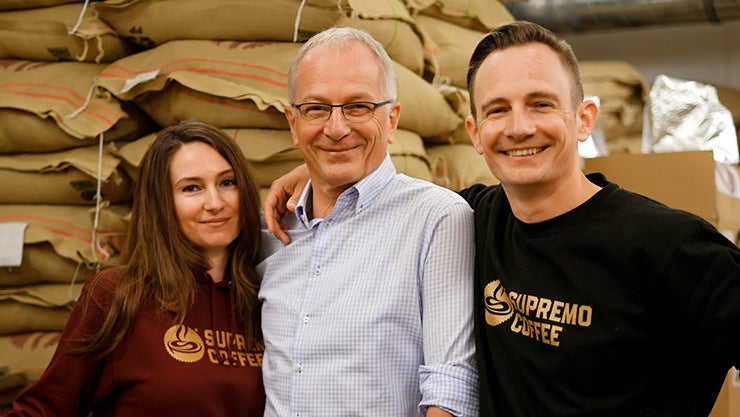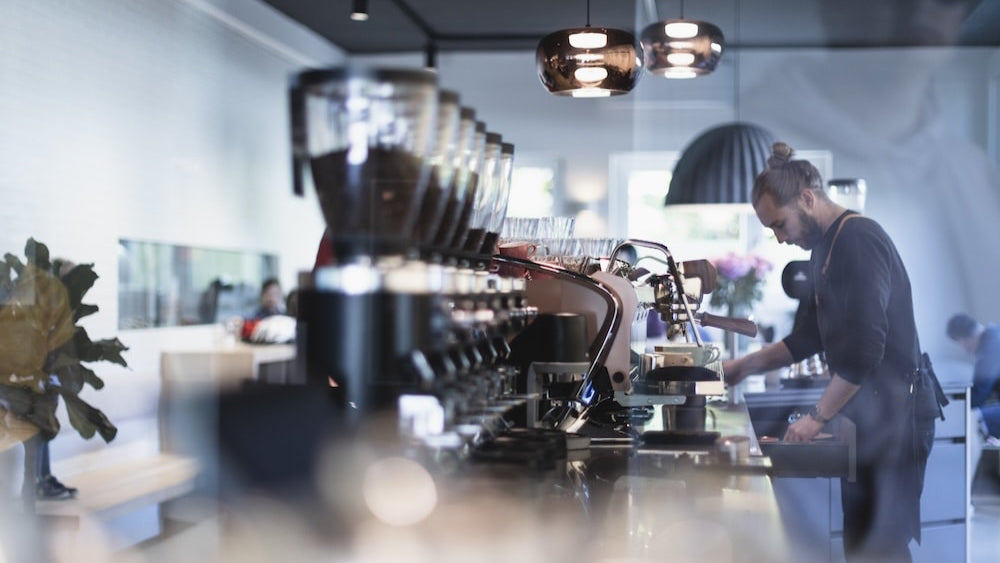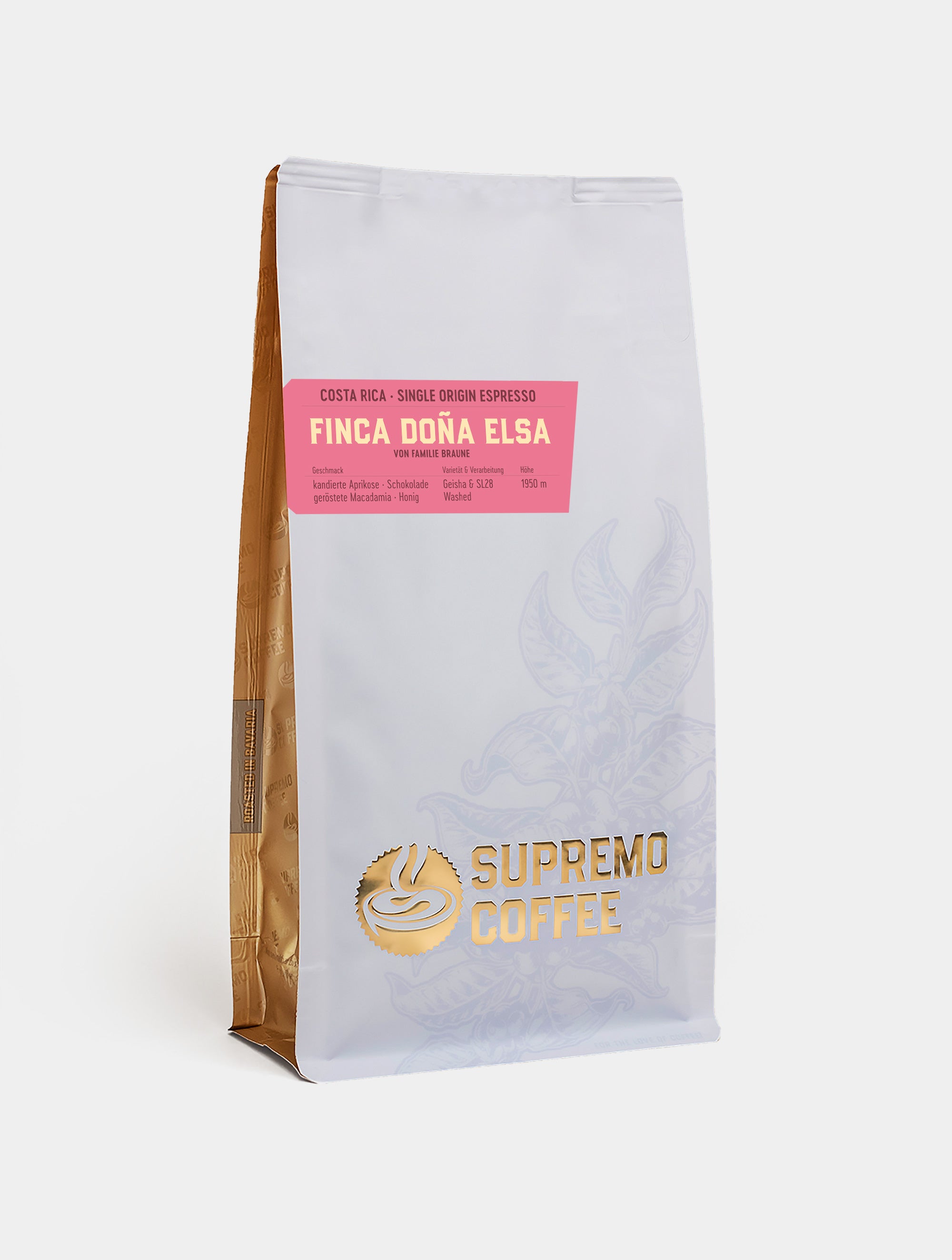
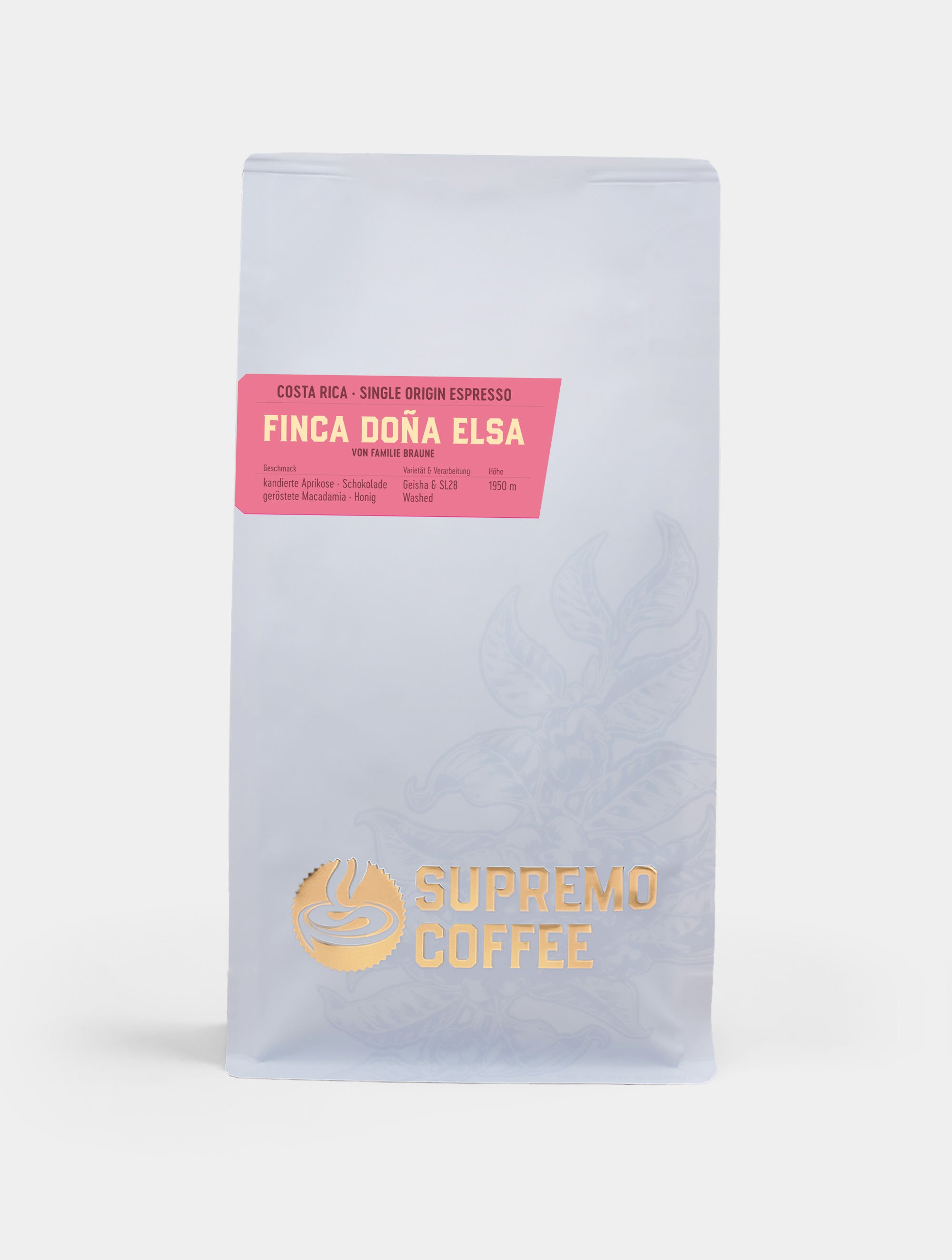
Costa Rica
Finca Dona Elsa Single Origin Espresso
Candied apricot · Chocolate · Roasted macadamia · Honey
Tax included. Shipping calculated at checkout
Facts
|
Country |
Costa Rica |
|
Region |
Tarrazú |
|
Farm / Farmer |
Braune Family |
|
Variety |
Geisha · SL28 |
|
Processing |
Washed |
|
Altitude |
1950 m |
Suitable For
Espresso Machine | Stove Top | Czeve/Ibrik
Recepe for Double Espresso
|
Dose |
18 – 19 g |
Farm History
For nearly 20 years, we have been traveling along the equator, following the so-called "coffee belt," always with the goal of finding the best coffees. Establishing a personal connection with the farmers has been important to us, and over the years, we have had the opportunity to learn about their various methods and approaches.
The time spent on the farms has been invaluable to us because we know firsthand that behind the hard work, every harvest, and every bean, there is an unwavering desire to achieve the best possible result.
During our travels, we learned a lot, and a secret wish began to grow within us, like a seed. Over time, this wish grew into a plant, initially delicate and small, but over the years, it became increasingly stronger. In the end, it became undeniable: We dreamt of operating our own farm where we could grow our own coffee, gather more experiences, and experiment with everything possible right on-site.
In Costa Rica, one of our favorite places, this dream was destined to come true! Costa Rica is known for high coffee quality, breathtaking nature, and, most importantly for us, incredibly warm-hearted people. In the highlands of Tarrazu, we found an abandoned steep slope at around 1950 meters above sea level, the perfect location for our farm.
But first, there was a lot of work awaiting us. With the help of friendly neighbors, we cleared a small path from the public road to our farm. We love trees, so we kept them and even planted some fruit trees. Simultaneously, we searched for special Arabica coffee varieties. Ultimately, four main varieties and a whole range of experimental varieties for our experimental garden made the cut.
In the southern part of the country, the selected coffee seeds grew into small seedlings in a nursery, which we later planted, one by one and by hand, on our farm. After planting the cuttings, we needed a lot of patience because good things take time. After three years of tender care for our coffee trees, the first dark red coffee cherries ripened, giving us our first mini-harvest. In total, our farm yielded only 40 kg of roasted coffee. However, we were absolutely thrilled and infinitely proud of every single gram of this coffee. Every cup of coffee was pure joy.
We achieved all of this as a family! In memory of our dear grandmother Elsa and our family bonds, we named our estate "Doña Elsa."
This year, the harvest on our beloved piece of land in Costa Rica has been somewhat larger. Our harvest has been brought in, shipped to Munich, and roasted in our roastery. We are proud of every single bean because, in this case, we can guarantee that every step from planting the seeds to harvest and roasting was done with care and love.
Today, we are delighted that we can finally share our coffee, "Doña Elsa," with our family, friends, and customers. Enjoying it together is even more fun!
Preparation Espresso
There are many different recipes that lead to an excellent cup of espresso. This example should serve as a basic recipe and can be changed and adapted according to your wishes and willingness to experiment. For each espresso of our line-up we provide a recipe that works well for us.

Preparation in a portafilter (general rules of thumb)
| Water temperature | 90-96 °C |
| Brewing ratio | 1:2,8 |
| Dose | 18 g |
| Yield | 50 g |
| Time | 25-30 s |
Step by step instructions
- Take the portafilter out of your brew group and rinse the group briefly.
- Place your clean and dry portafilter on a scale and tare it.
- Grind the desired amount of coffee (dose) into your portafilter.
- Distribute the ground coffee evenly in the sieve, you can use your finger here or a distributor.
- When tamping, it is important to apply pressure vertically to the coffee to ensure even compaction. It is also important to apply pressure only once to avoid channeling.
- Remove any coffee residue from the edge of the screen.
- Start your shot as soon as you place the portafilter in the group.
- Stop your shot when your target yield is reached.
- When there’s no more coffees to make, empty, clean and dry your portafilter, flush the group and place the portafilter back into the group to ensure it stays hot.
Troubleshoot
| Problem | Possible reasons | Solution |
| Espresso tastes bitter | Grind too fine
|
Coarser grind
|
| Espresso tastes sour | Grind too coarse Under dosed Forgot to tamp → results in shorter shot time |
Finer grind Increase dose Tamp → results in longer shot time |
| Espresso is too strong | Over dosed Too little water |
Decrease dose Increase amount of water |
| Espresso is too mild/weak | Under dosed Too much water |
Increase dose Decrease amount of water |
Family Project Supremo
Our quality standards
The roasting craft
Choose options


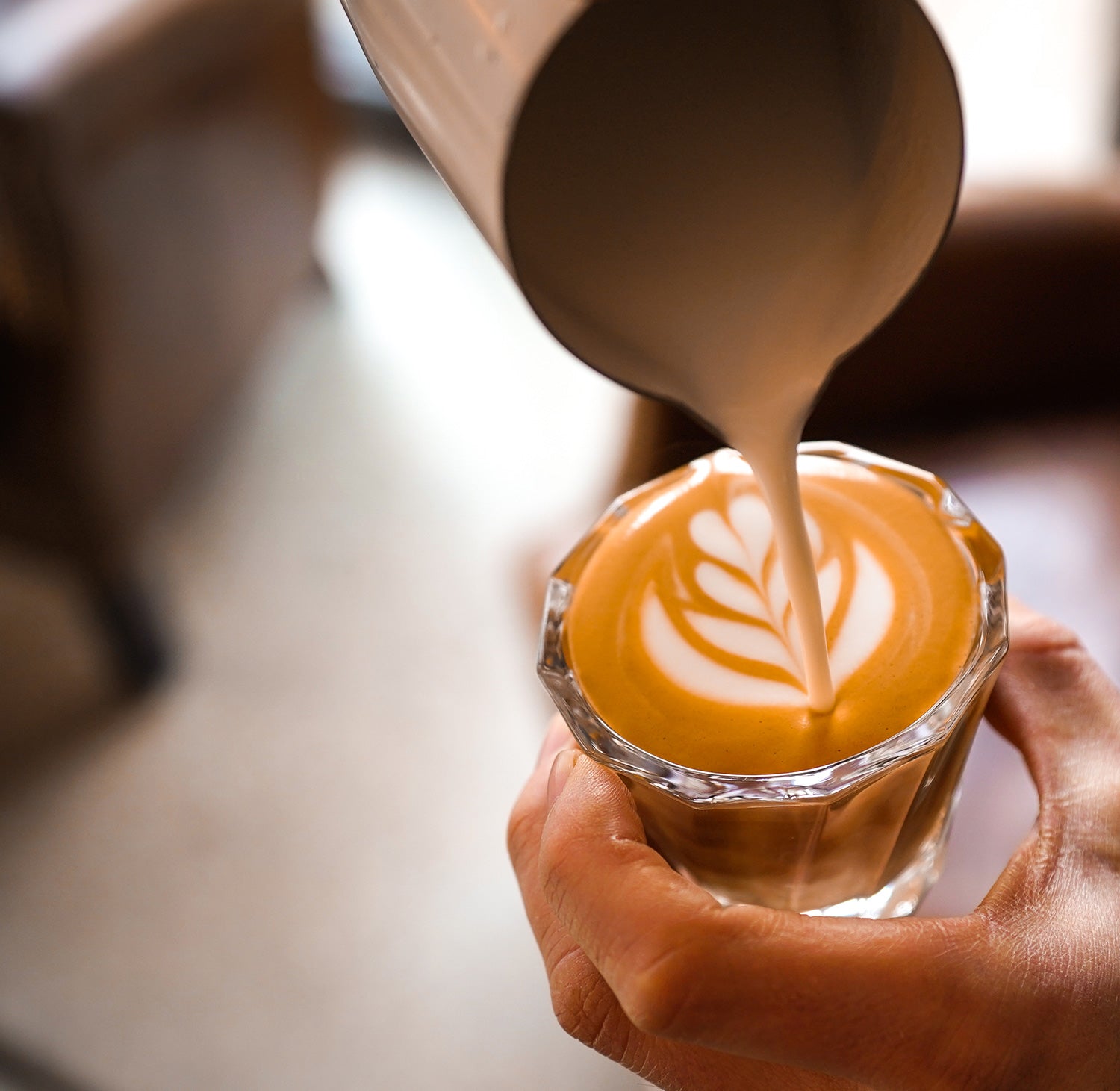
GET THE BEST OUT OF Finca Dona Elsa Single Origin Espresso
When it comes to coffee, a bit of attention to detail helps somewhat.
With a precise scale and a suitable tamper, the espresso becomes a tad better ...

